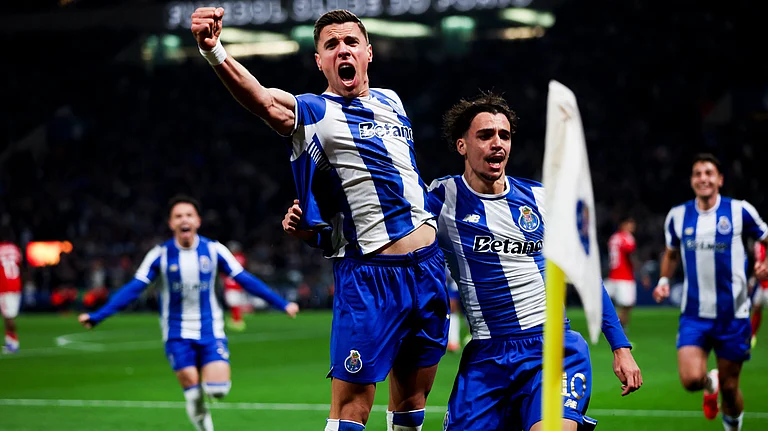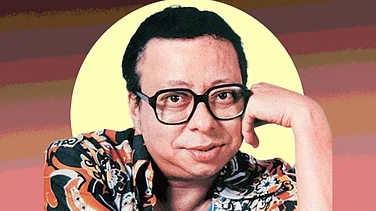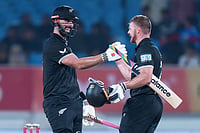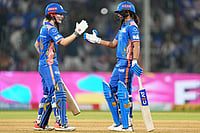In 2007, at the little magazine pavilion at the Kolkata International Book Fair, Bengali writer Subimal Mishra was there with his latest literary work which was not easy to catergorise in form or publishing format. It was roughly 400 pages of photocopied papers—a mix of visuals, handwritten and typed original texts, and cut-ups, calligraphy, designs, newspaper advertisement and photographs—in a fat cardboard paper file. Even the title of the work made it difficult to print for mainstream publishers, as it included expletives.
This was towards the end of his literary career, and Mishra, who died in February this year at the age of 80 after a prolonged illness, was becoming more rebellious against dominant and conventional writing and publishing forms in the autumn of his life. Two collections of English translations of his earlier short stories have since been published by HarperCollins India. However, Mishra’s readership in Bengali has always doubted whether it is at all possible for any mainstream publisher to produce his books exactly the way he originally published them, either with independent publishers or by himself.
Some of his books would have no cover, others would have almost illegible text, there would be multiple blank pages for readers to comment or simply stare at. He would play with fonts and point sizes, there could be one word or a sentence in a whole page and the books would also have no fixed price—they would say ‘Rs 250 or whatever a reader of Subimal Mishra deems fit.’
Such unconventional works almost always remain outside the margins—difficult to find and rarely heard of. That might be one of the reasons why Egyptian visual artist Maha Maamoun and Jordan-based artist and researcher Ala Younis perhaps never heard of Mishra or his books. Else, they would have felt tempted to include them in their exhibition that is part of the ongoing Kochi-Muziris Biennale. The exhibition is born out of their research on publishing forms, languages and accessibility, trying to explore ‘the efforts to reclaim the agency to publish.’
Titled ‘How to Reappear: Through the Quivering Leaves of Independent Publishing III’, the exhibition showcases a range of alternative publishing samples—some displayed on the walls, some on tables and wooden boxes. It is curated under the banner of independent publishing house Kayfa Ta that Maamoun and Younis founded in 2012. This is the third edition of the series, the first having been held at Beirut Art Center in Lebanon in 2019 and the second at Mohammad and Mahera Abu Ghazaleh (MMAG) Foundation in Amman, Jordan, in 2020.
The current show at TKM Warehouse in Kochi has several representations from India, and features the works of three independent publishers—Reliable Copy, Tara Books and And Archive. On display are issues of Trolley Times, the bilingual newspaper borne out of the need to garner support for the 2020-21 farmers’ movement and to counter alleged disinformation spread by a section of India’s mainstream media. There is a five-panel set of framed RTI replies to build awareness on the Act and an installation involving volumes of the Swaminathan Commission report to draw attention to the plight of Indian farmers.
It also includes audio and audio-visual contents and installations, as Maamoun and Younis consider the word ‘publication’ to describe the act of making public, for which any of these mediums could be used. According to Younis, the threads that run through the show arise from and respond to the need, act and forms of publishing: “How to articulate differently and how to share these articulations, in their multiplicity of formats, with a public, despite the various restrictions on form and content that demarcate the sphere of publishing, be they commercial, political, aesthetic or other,” she says.
Cairo-based architect and researcher Abla elBahrawy’s book Papyrus Gang is part graphic novel, part five-act play, is a memorable book to chance upon. What’s more, next to it is a QR code to watch a video of an exquisite limited edition handmade book of illustrated texts, titled ‘El-Bardi’, whose content is based on the Papyrus Gang. Alas, such visual-textual delights have never been meant for mass production.
According to Maamoun, the idea of an exhibition around publications came to them after they noticed how the effort of independent publishing often goes unacknowledged. “We thought for once we could have a visible physical body for independent publishing efforts coming together,” says Maamoun.
Little magazines, the non-commercial literary periodicals that are often hard to categorise, have been an important form of independent publishing. In India, Bengali, Marathi, Tamil, Telugu, Malayalam and Kannada are among the literary cultures to have benefited from thriving little magazine movements, with a rich heritage of writing and publishing experiments. But since they mostly print only a few hundred copies and rarely reprint, the books go out of circulation in a few years.
Noopur Desai’s collection, titled Samathara Masike: Little Magazine Movement in India, showcases Marathi little magazines like Atta, Asa, Timba and Yeru, which undertook remarkable publishing experiments during the 1960s. One could declare caring a hoot about grammar, while another could take pride in their publication having no schedule or cycle.
Kyafa Ta’s ‘How to’ series of books are unmissable, too. They are ‘monographic essays’ commissioned in the style of how-to manuals. For example, in How to Disappear, author Haytham El-Wardany proposes a set of aural exercises for discovering and connecting with one’s own self in relation to other people, nature and electrical appliances. In How to Know What’s Really Happening, Francis Mckee explores “various techniques for determining verity, from those of spy agencies and whistle-blowers to mystics and scientists.” Whimsical, undefinable, eclectic, these publications are nothing short of works of art and have rightfully found their place at the Kochi Biennale.


























